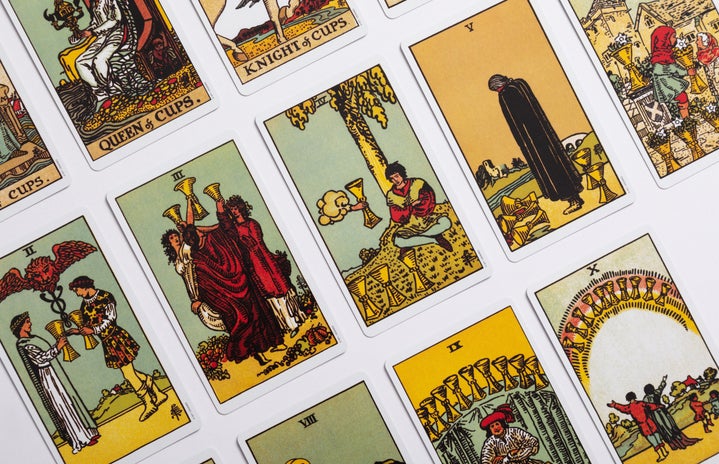An orange hue from the east window lit up the rusty first-floor apartment. The five-year-old sitting in the living room didn’t even realize that the day was coming to an end; she was too immersed in Harry Potter and the Deathly Hallows – Part 1 to know the difference between day and night. There was a certain magic that lingered in the air. Was it her fascination with wizards and witchcraft, or was it her child-like belief that it was all real?
The funny thing about belief is that as we grow older, we can attest to whether or not that belief is real. And with the common sense that comes with age, I believed that witchcraft only existed in the world of fiction.
There always comes a time when people will look at the last possible hope in solving a problem: God or any higher power. Whether it is the night before an exam or like my mother, who frequently relied on “people who can see the future,” as she would phrase it. She believed that she received divine revelation through tarot readings and birth charts. Surprisingly, I became a skeptic of these divine revelations when I believed in them merely a few years ago. But, a thought always lingered, “what if?”
What if those cards could actually help me or help others?
That is how it started. During the COVID-19 lockdown, on the brink of losing my mind and resorting to the last possible hope, I started studying spirituality and witchcraft. After countless readings, the consensus told me to pick out the perfect tarot deck, that the deck would “speak to you.” After countless hours scrolling on Amazon, I found one that seemed to “speak to me.” Or maybe it was just pretty…
The awaited package was at my front door. My first reading was the first time I opened my deck. To my surprise, according to the card “death,” I was about to die. Now, after many readings, I can easily say that death does not mean physical death, but more of death of an idea, relationship or even situation. But alas, I did not know that then.
What enrages beginners the most is the question, “But how does it work?”
The oldest tarot references originate in the 1440s and 1450s from the quadrilateral formed Venice, Milan, Florence and Urbino.
Surprisingly, before it was used for “occult purposes,” it was used for diversion and games.
The evolution, or rather the revolution, of tarot cards in the past decade started with Jean-Baptiste Alliett, who first developed a concept for the tarot cards when he linked tarot to divination in his book in the 19th century. Many of his practices are still used today. He assigned a specific order and spread to the cards. These cards were linked with astronomy and the Egyptian Book of Thoth, which revealed the arts of writing and healing.
While you may be just an internet click away from searching “tarot for beginners,” I would like to share what personally worked well for me.
First, the “spiritual journey” is very personal.
It is important to understand that these cards were not meant to be fortune tellers. Actually, they work on intuition and may be connected to human consciousness. For me, I have performed tarot readings that have given me an insight into the person’s feelings and where their past lies. The rest is followed by intuition, which is guided by the tarot cards; they show the picture and symbols meant to be interpreted by one’s intuition. The beauty of tarot’s connection with spirituality is that it is connected with intuition. These practices just help to guide it.
I have tried the “fan out” method, where you fan out the cards on the table. That did not seem to work for me, even though it was recommended for every beginner. Through practice, I adopted a different approach that worked beautifully and was in tune with me. It is called the “jumper” method. I slowly started thinking about the question and started shuffling through, and whatever card “jumps” out works.
While I do not have an explanation as to why and how this method works, all I know is that it helped me. Many loved ones sat right across me while I uncovered their deepest fears, in hope that the cards could help me provide them guidance.
If you wish to start practicing, here is a tip: tarot tells a story about the person. So, if your cards tell you about infidelity in the relationship in front of the distressed partner, share the news lightly.
With every good comes evil. You may see something disturbing about a loved one or even yourself. In those moments, try to seek guidance and not the outcome and give yourself a break if that happens.


